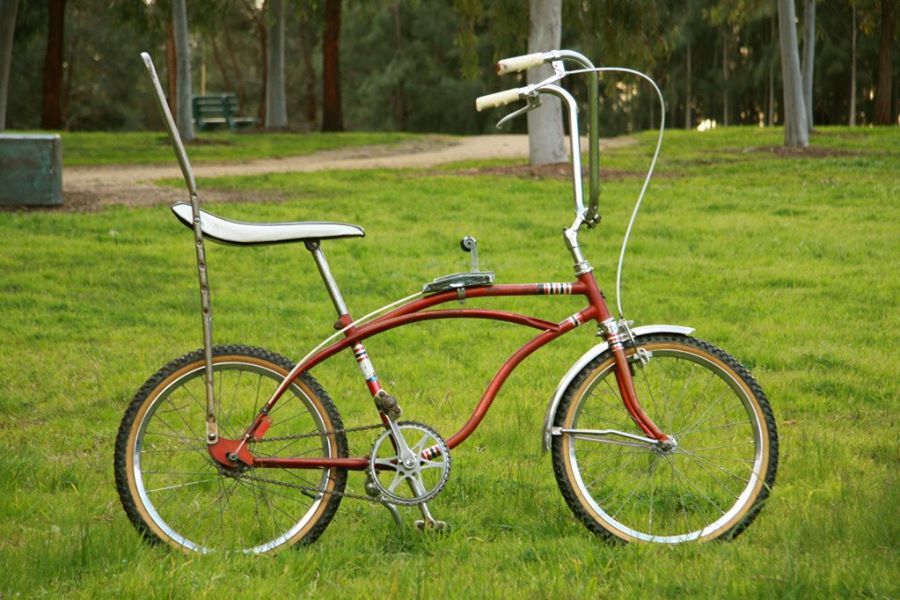I don’t mean BETTER. That’s a different conversation. I mean cooler.
An old CRT display was literally a small scale particle accelerator, firing angry electron beams at light speed towards the viewers, bent by an electromagnet that alternates at an ultra high frequency, stopped by a rounded rectangle of glowing phosphors.
If a CRT goes bad it can actually make people sick.
That’s just. Conceptually a lot COOLER than a modern LED panel, which really is just a bajillion very tiny lightbulbs.
Pneumatic tubes were way, way cooler than email.
Of course, you could only use them to send a message to someone in the same office building, so the comparison isn’t perfect… but you know what I mean.
I’m not crazy old, but I’m old enough that the supermarket I went to as a kid had these at all the checkout aisles and the cashiers would use them to send cheques/reciepts/ whatever.
It was awesome to see.
They still use them today in some supermarkets, now they use them to send packets of cigarettes through the store.
That’s actually a pretty good use. In my local market they send the person to a separate counter.
Very cool, I’ve never seen the ones that can send a person. Can they breathe in transit?
It’s pneumatic, not vacuum. Geez.
Making it dangerous to smoke while in transit. I see why the people ones didn’t catch on in the 50s.
Okay, maybe my town is just not up to date, but these are still in use at all the banks and pharmacies where I live. Are they phased elsewhere?
I haven’t seen one in years, but the fact that they’re all used is awesome.
The Kroger pharmacy here replaced their awesome pneumatic tube with a boring sliding drawer.
They are used in some hospitals in central Europe
In the Netherlands I see them in nearly every big hospital. I think for sending blood samples to the lab quickly. (Possibly among other things)
Some downtown big cities had the buildings interconnected.
Prague had a large pneumatic post system which operated for 100+ years.
I had no idea there were systems that spanned entire cities! Thanks for the link!
Roosevelt Island in New York City uses pneumatic tubes for trash collection!
Ironically, it actually sucks less than the famously terrible way the rest of the city does it.
Cool. Thanks for the link!
Big hospitals still have them to send medications and random lightweight stuff around the complex. My wife has worked in two large hospitals that had pretty extensive tube systems, used especially with pharmacy.
Tom Scott does a youtube video about one in Canada (IIRC) where they send radioactive medicine from the lab a down the road to a hospital due to the half life of the medication making traditional transport (ie vehicles) impractical.
Edit: bothered to look it up
I know of a hospital where the local university sends tracers with F-18 for PET scans in much the same way. Half-life of 110 minutes.
My Walmart has them for a pharmacy drive thru.
The two major hospitals, relatively near me, use a combination of tubes, and robots, to dispense medications. One is working on completely robotic food service, and has completely robotic floor cleaning/polishing. Both, also, have robots that do the basic landscaping maintenance, like mowing/edging. There is more, it is interesting to walk around and see all these infrastructure systems work. Feels, at least partially, like the promised future of sci-fi.
Hate someone in the office? Pour hot coffee into the container and send it to your victim.
Before ATMs, bank drive-throughs (the ones with multiple lanes for cars) had pneumatic tubes to send cash and checks to the bank teller, or receive cash.
Some probably still do. I feel like I used one within the past 10 years.
They’re still in use at most banks where I live. Most hospitals use them too; way faster than dumbwaiters
I remember those! I wouldn’t be surprised if they’re still in use. I’ve never used the drive-through lane at my bank. I can deposit checks online by taking a picture of it (which still seems weird to me), and I use the ATM for everything else.
The factory i work at occasionally still uses them for delivering tests to the lab, pretty cool to hear them swish around in the pipes.
Cars used to be cool. Every car company had some kind of sporty car, a couple cheap cars, a big luxury sedan and, a while ago, a station wagon.
Now every car is an SUV or CUV. Sedans are getting phased out. Cool sports cars don’t make money so they don’t make them. People don’t buy station wagons so they don’t make them. And they’re pushing big, angry trucks on everyone.
This, so much this. As a car enjoyer, seeing cars slowly mutate into giant bloated expensive iPads on wheels is painful. I don’t want to buy any car made past 2010 and I know that won’t be a viable option soon.
In the last episode of The Grand Tour Clarkson said that he’s done with cars because they’ve become appliances, and it’s no fun reviewing microwaves.
Removed by mod
The old Ford Rangers were definitely not easy on gas, and those back seats were extremely unsafe. But we could absolutely have trucks that size now that are fuel efficient and safer, and I would buy one in a heart beat. Hell, I tried to buy a Maverick but it’s been impossible every year and now they don’t even come with the hybrid drivetrain standard so I’ve lost interest.
Compared to any of the bigger trucks of the dame vintage? They were cheaper on gas
Removed by mod
Fuck yeah, I’d love an El Camino
I’d take it even further: Cars used to be cool - in the 50s to late 60s. Modern cars look so bloody bland in comparison. I’m sure there were duds as well, but the models that show up in period pieces look way cooler than anything we have today.
The engine compartment of a really old car, say pre-1970s, is almost comically empty. Anything newer has so many ducts and hoses you can’t see the ground.
I’m tired of fuckin hatchbacks, I just want a regular car, not an SUV, not a truck, just, a fucking car car.
I’d like it if hatchbacks could be hot again and not SUVs. Ford Focus, VW Golf, those sorts of things.
That’s all well and good if you want one.
I want a plug-in hybrid, and almost every option is either unflattering or expensive https://www.caranddriver.com/features/g15377500/plug-in-hybrid-car-suv-vehicles/
Sedan or coupe?
I mean really I’d prefer a four door but more for carrying… A little more stuff? I don’t know, I really want a Rivian but they’re like 80k and all.
I mostly want a four door so I can throw shit in the back.
A rear door is handy for throwing shit in the back tho - I wouldn’t even buy a car without a hatchback for that very reason.
I’m a fan of (five door) hatchbacks, but station wagons were fucking cool
People don’t buy station wagons so they don’t make them.
Hatchbacks are just renamed station wagons. Change my mind.
I’d say a hatchback is a sedan with the trunk/boot removed, while a station wagon has the trunk/boot extended to the roofline. Hatchbacks would end up shorter than the sedan or wagon version of cars.
All the station wagon I ever owned I could comfortable sleep in the back of, with a partner. Hatchbacks are way too short.
It’s because people want a big boot. In Europe hatchbacks/cross overs are favored over sedans for that reason. And people just don’t like the look of a station wagon/estate car. Only the luxury brands still make sedans.
Disney lost their old camera tech used to make a “yellow screen” with sodium vapor lights.
It’s actually better than a green screen because the yellow light is so specific that even if you remove that particular frequency of light, everything else still looks fine. You can do all sorts of things that would normally be very difficult to pull off with any of our green screen tech (like drinking water in a clear bottle or wearing a rainbow dress).
This was a really cool video!
Considering LEDs are so good at producing a very tight wavelength, I wonder if this could be replicated with more energy efficient lamps.
Or if non visible spectrum lights can be used to make similar alpha channel masks that don’t affect lighting the scene.
A laser, maybe, but definitely not LEDs. Vapor/gas lamps produce the narrowest frequency bands possible, because it comes from very well defined atomic transitions (Hz range). LEDs produce frequency bands with widths in the GHz/THz range, while semiconductor lasers can maybe reach KHz if they are really good. So, unfortunately, for this type of applications, vapor lamps would probably still be needed.
Source: I work with lasers and spectroscopy.
Edit: very good idea about using non-visible light!
Is there some filter that you could put up over the LEDs that would block everything but a very narrow frequency of light?
Well, one possibility is using something known as Fabry-Perot filter. It allows an extremely narrow frequency to pass, due to multiple reflections and interferences inside the material. Put the light source material within this filter, and you get a laser. That’s essentially the main difference between a led and a semiconductor laser. The filter makes only a narrow band of the emission be “stuck” there, creating a feedback effect that eventually tends to infinity, and a good chunk of that power passes through the filter reflectors, which are intentionally not perfect.
Other than that, I don’t think there is a filter that could be as narrow as the line emission from vapor lamps. Maybe using metamaterials, but a laser would be so much cheaper and easier. A vapor laser would certainly get the job done, but they are large and hard to maintain.
Steam locomotives. The crazy streamlining, the size of some of those motherfuckers. 6 foot tall wheels, 100 tons moving at 125mph and all that shit accomplished 80+ years ago
Also, when they catastrophically failed they wound up looking like industrial lovecraftian horrors and produced some of the loudest non-nuclear man made explosions.
None of which is a good thing, but is still pretty cool.

Looks like one of those mechanical cancer SCPs.

The choochoos got really big at the end of the steam era. UP 4014 happens to be about as long as that bridge which crosses a 4 lane road
In the near to mid future, I think an answer to this question are Internal Combustion Engines. I love electric vehicles and look forward to the tech improving. But the sheer coolness factor of moving a large machine through perfectly timed and calibrated explosions is tough to beat.
I fucking hate cars, including electric ones… And I still agree. Combustion engines are cool as hell.
Thoughts on motorcycles? Totally fine if you really don’t like them either, I’m just curious :)
Grudging respect.
I don’t like motorcycles either, but they are the “noble steed” of my country’s entire service industry, and being a worker in said service industry is a very sucky (and dangerous!) position to be in.
So I don’t like bikes. But. I respect their riders. Their lives are hard and they are therefore stronger than I.
Interesting, that’s very different in my country so I appreciate hearing your perspective!
Hope you have a good one :)
Please tell me this doesn’t run on gas! Gas explodes, you know?
I recognize that reference, but I can’t quite place it. Futurama? Star Trek: Lower Decks?
It’s from the “I, Robot” movie, but would fit perfectly well in Futurama hahaha
Heinlein’s “The Rolling Stones” had a similar description.
maybe I, Robot? been a minute…
And the fact is “mechanic automated” system for me is what makes it even cooler. All you had to do to start is twist it a couple revolutions and bang, it works as long as you have fuel because everything simply works. Of course, today you have electronic fuel injection and so one, but if you want you can make it works just with a lot of metal to do the right parts.
Man, I’ll miss combustion engines (but I hope its use ends ASAP because planet can’t wait anymore)
That’s why I kinda like my carburated 2-stroke motorcycle.
Needs just 3 wires from the engine to work and 1 to shut it off. Weighs just around 100kg and will propel me to 90km/h with just a 50cc cylinder.
Not to mention the smoke, sound, and the narrow powerband, just love that feeling.
Suck, squeeze, bang, blow
Sounds like a good way to spend a Friday evening.
As a subset of this, the fact that carburators worked as well as they did, until we had the technology to invent the simpler fuel injector, I think is pretty cool.
Constant velocity carburetors blew my mind when I learned how they worked, and I got the funniest introduction to them.
I had an Aprilia RS-50 motorcycle which had a slide-type carburetor. Instead of a coin-in-a-pipe throttle, this thing basically had a portcullis across the intake. Pulling on the throttle cable pulled the slide upwards making the aperture/venturi larger, allowing in more air, while also lifting a needle up out of the jet to allow more fuel in. It’s a 2-stroke race bike, so you could easily bog down the engine if you opened the throttle too fast.
Then I bought a Ninja 250F, which has constant velocity carbs. Which also have a slide, AND a butterfly valve. The butterfly valve is operated by the throttle cable to control power. The slide is vacuum powered from the engine, and opens and closes the venturi to keep the air velocity through the carburetor constant, in order to keep the suction at the jet constant. It also has a needle in the main jet which it lifts along with the slide, so the needle’s taper meters the fuel mixture for the amount of air going through the carb. This inherently compensates for air density; if the air is less dense the vacuum mechanism can’t pull the slide open as far so the slide doesn’t open as far, and neither does the needle valve. So it automatically maintains the mixture.
Which is why using constant velocity carburetors on the Rotax 912 engine is such a brilliant idea. A carbureted airplane engine with no cockpit mixture control.
RS50 is such a fun bike, and I know the pain with the carb, I have to ride mine uphill, also, just replaced the 12mm flat slide carb with a 17.5mm round slide, runs quite nice
I had one of the very few of them in North America. I don’t think they ever imported them at any great scale. I bought mine used, and it was obviously used as a track bike. It had a cylinder kit that took it up to about 72cc, the damn thing could do 70.
Drag disagrees. If you want transportation with fire, ride a dragon. No need to pollute the earth. The emissions make it uncool, just like the ridiculous Mad Max cars.
If you want transportation with fire, ride a dragon.
Username checks out. I see you everywhere, and your comments often make me happy.
I definitely agree with you that cars are terrible, and I wish they didn’t exist. Even though I’m a hater, I gotta admit the engineering and history behind them fascinates me, still.
Thank you!
Does your dragon not fart?
It’s why I’m hoping that hydrogen ICE become a thing instead of going to full electric.
It won’t. Hydrogen has terrible efficiency even when fuel cells are in the pipeline. Putting it in an ICE only makes it worse. It’ll have some racing applications, but that’s it.
You have any sources for this? A quick glance at wikipedia says that hydrogen ICE has about the same energy efficiency as gasoline, if the engine is properly tuned.
Yes, that’s correct. Fuel cell efficiency is over 60%. The best gasoline ICE is around 50%, and hydrogen isn’t going to be much better.
The problem becomes especially apparent when you stack the end to end efficiency together. Grid -> battery for battery EVs, and grid -> electrolysis -> fuel cell for hydrogen. There’s a couple of different ways to run these numbers (are you using 120VAC or 240VAC or DC, for example), but when using like-for-like comparisons as much as you can, batteries tend to win at efficiency by a lot. Running hydrogen through an ICE is only going to make its biggest flaw even worse.
Edit: there is a recent breakthrough in fuel cell efficiency that might put it on par with batteries. Note that even if it works in production cars, a fuel cell would be turning an electric motor, not an ICE. https://www.youtube.com/watch?v=ISuUlc8widc
I never knew the complexity of ICE until watching the Garbage Time YouTube channel. They repair old cars (and sometimes break them to fix them later) and show the whole process, but do it as a hobby, so it’s all for entertainment.
Whenever I hear a running hit and miss engine it brings a smile to my face, similar with small stationary steam engines. There’s a club in Baraboo WI that does a big meetup once a year where there’s just tons of early tractors and stationary engines powered by all sorts of different types of combustion with all sorts of creative new engine designs that stopped being viable around the time of the first world war. I haven’t been able to go most years but it’s really incredible to see so many wonky engines wirring and popping and hissing and clanking around, all while struggling to reach the performance of a present day lawnmower (and not a good one at that)
deleted by creator
Pictures under glass: literally the only affordance anyone has now for device interaction
When the Vengabus has poorly shielded speakers.
Micheal Fisher’s kbin account.
Mine folds in half, so that’s kinda cool
Automatic watches and grandfather clocks. The way they kept track of time using only mechanical principles is crazy. How does my automatic watch recharge itself using only the movement from wearing it and keep accurate track of time. Grandfather clocks are cool because they’re so power efficient.
They are very cool indeed. And the fact that you can have a century old watch on your wrist and it’s just as useful as a modern one. In fact I’m wearing a watch from the 50s right now!
deleted by creator
Oh man…I have an entire ten page paper on the go about this topic and it just keeps growing. One day I’ll publish it in a blog or something, but for now it’s just me vomiting up my thoughts about mass market manufacturing and the loss of zeitgeist.
The examples that I always use are a) Camera Lenses, b) Typewriters, and c) watches.
Mechanical things age individually, developing a sort of Kami, or personality of their own. Camera lenses wear out differently, develop lens bokehs that are unique. Their apertures breath differently as they age No two old mechanical camera lenses are quite the same. Similarly to typewriters; usage creates individual characteristics, so much so that law enforcement can pinpoint a particular typewriter used in a ransom note.
It’s something that we’ve lost in a mass produced world. And to me, that’s a loss of unimaginable proportions.
Consider a pocket watch from the civil war, passed down from generation to generation because it was special both in craftsmanship and in connotation. Who the hell is passing their Apple Watch down from generation to generation? No one…because it’s just plastic and metal junk in two years. Or buying a table from Ikea versus buying one made bespoke by your neighbour down the street who wood works in his garage. Which of those is worthy of being an heirloom?
If our things are in part what informs the future of our role in the zeitgeist, what do we have except for mounds of plastic scrap.
Old camera lenses are awesome. I’ve got some steel and glass rokkors that are beautiful. They render in such a wonderful way too, so painterly. They have thorium in the glass! Not enough to be sketchy to use but something that obviously isn’t done anymore. Bonus points that they can be fixed with a hammer.
Old camera stuff in general is subjectively cooler. The leaf shutters in my 4x5 lenses are incredible little machines. Film in general is cooler than whatever sensor the latest and greatest has. Actual bits of silver suspended in emulsion, with colour filters and dye couplers that react in development. There’s a great three part video on YouTube breaking down Kodak’s manufacturing process. It’s mind boggling that stuff even works. Ohhhh and actually darkroom optical prints! Don’t get me started there!
I’m going to develop some rolls I think. Got me in the mood.
I have a couple of 80s Rokkors that I use with a speedbooster on my lumix g9, a 50mm and a 35mm. Despite having to do some math in terms of converting things like focal length, etc… because of the adaptor, It’s WELL worth it.
Rokkors here as well! I still shoot them mostly with film, but I’m tempted to get an adapter for my Fuji. Don’t love the conversions though, stuck in my ways with focal lengths and it’s just weird when a 28 becomes a 42!
Just wanted to say thank you for writing this. Very cool take, that was so well written to get us on board for how and why “that old junk” has personality that is being lost.
Also
Damn.
Awww shucks. Thanks. I appreciate the compliment.
Damn.
Not much to say other than – “Damn.”
You’re right, though.
My house is decorated with either items from the antique store or from IKEA. There are reasons for both but you need to have unique and mass produced things. We have turned too much for the mass produced
Great post! I was thinking about it the other day. I have a Citizen wrist watch from the 60s from my grandfather. It looks like new and functions well (mainly because of its self-winding mechanism). I also have a high-end Garmin watch, which from my personal experience lasts about 2 years, so I decided to start treating modern watches like the junk they are: get the cheapest possible that still has the features I want, because I’d be replacing it in two years’ time anyway.
I also have an old mechanical typewriter. The drum doesn’t move on the A key, so I’m used to hit the space bar whenever I type an “a”. It moves the drum slightly more, which is something I always notice when I read pages typed on other typewriters. And don’t get me started on the font. No computer can recreate the idiosyncrasies of a good typewriter.
Damn, now I got all nostalgic again. If you excuse me, I’ll be in the attic, hammering away on my Consul…
You are essentially my thesis statement. Lol.
!remindme One Day
Pop up headlights! Way cooler that way. I’ve heard a couple reasons given for why they stopped being a thing, but one of them is that they were considered too unsafe for pedestrians-
Which is a fucking crazy though when you consider what we now blindly accept in automotive design with respect to pedestrian safety 😅
Yes. I’d rather smash my femur at a pop up headlight while lounching over the engine hood than being dragged underneath an SUV street tank and being squashed.
Yep! The height and slope of the car’s front end is actually one of the leading predictors of health outcomes for pedestrians involved in motor vehicle accidents
https://youtu.be/YpuX-5E7xoU?si=xLLhl4Gb-Yt6lmvh
Now please give me back my cute flippy headlights 🥹 they make me happy and they’re not even up during the day when you’re most likely to encounter pedestrians!
I drove a '94 Ford Probe for awhile, it was already 15 years old when I bought it, so I had been hearing stories about the shoddy reliability of flip up headlights for years at this point. Imagine my surprise when I never had any issues with them then, even while living in northern Minnesota. I remember one time after a particularly bad ice storm, turning them on and watching them shatter the ice on my hood and send pieces flying while popping up just the same as always. I loved that car and wish I’d had the money to keep it going.
Ah, but at night is probably when you are more likely to actually hit a pedestrian. I wonder if the stats back up that intuition…
Edit: also, yes pop up headlights are way cooler.
Disregarding the safety comments (which should not be disregarded) purely for the purposes of this conversation, in older cars the vacuum tubes that operated the lights would frequently fail, meaning that the lights wouldn’t deploy even when desired.
That was revised in slightly newer cars, where the vacuum lines from the engine were required to hold the headlights closed. So when the mechanism inevitably failed, you had permanently deployed headlights until/if it was repaired.
Huh, never knew. My sole exposure to this was one quite classic car. Thanks for the information!
The internet?
Web 1.0 and even before was way cooler than this corpo bullshit web we have now.
Even the corp pages back in the day where cooler. I remember going to the Warnerbrother webpage to play some Daffy duck game they had. Same with cartoon network’s page and probably a bunch others I can’t remember. It was more passion than profit.
You could try Gemini or gopher web, it reminds me a lot of web 1.0, both style and community feel.
Not to mention way faster and more accessible
I feel like you don’t actually remember what web 1.0 was like. Or even bbs’s. They… kind of sucked. I mean they were great for the time, but compared to the internet of today, pathetic.
The funny part of this comment is that when I was a teenager, I started and ran one of the largest RBBS systems in Canada with about 40 USR modems, and helped out on a couple more big ones like Rusty and Edie’s in the US. I also set up one of the first Echomail and Fidonet nodes in the country, and was a very early adopter getting usenet links working via RBBS. I loved that time, it was exciting and new , and western as hell.
So I’m pretty sure I know exactly what I’m talking about.
For real. It certainly wouldn’t hit the same these days - there are reasons these things fell to the wayside - but back in the day? God damn that shit was cool.
Any mechanical regulation process that used to be handled by actual machine parts. Think of the centrifugal governor, this beautiful and elegant mechanical device just for regulating the speed of a steam engine. Sure, a computer chip could do it a lot better today, and we’re not even building steam engines quite like those anymore. But still, mechanically controlled things are just genuinely a lot cooler.
Or hell, even for computing, take a look at the elaborate mechanical computers that were used to calculate firing solutions on old battleships. Again, silicon computers perform objectively better in nearly every way, but there’s something objectively cool about solving an set of equations on an elaborate arrangement of clockwork.
The idea of punch card programming blows my mind.
He’s not talking about punch card programming, that’s way more advanced and requires a Turing machine, what he’s talking about is computers as the term was using before what you would think as a computer existed.
The example in the video is for the computer on a cannon in a battleship. If there wasn’t a computer you would need to adjust the angle and height of the cannon, but that’s not something a human can know, what humans can know is angle to the ship and the distance to it, so instead you put two inputs where a human inputs that and you translate that into angle/height. Now those two would be very straightforward, essentially you just rename the height crank to distance. But this computer is a lot more complex, because wind, speed, etc can affect the shoot, so you have cranks for all of that, and internally they combine into a final output of angle/height to the cannon.
That’s cool, but punch card programming blows my mind.
To add, there is something about those old 40s and 50s era technical films like you linked that is just so… I don’t what exactly it is, but I find them fascinating and genuinely informative, even though they are explaining tech that is decades obsolete.
It’s pretty awesome that they are still available 70+ years later in excellent quality!
Someone showed me a record turntable with what must have been a centrifugal governor! What an ingenious device. (I got the impression from him this was unusual for a turntable, at least…)
I was under the impression that all wind-up turntables (I.e.: from the shellac records and steel needles and mechanical reproducers era) were using mechanical governors
Maybe I’m wrong though.
Oh I know little to nothing about turntables, so you’re probably right :-)
H model C-130s, the ones with the 4 square blade props? The engines and props are mechanically governed. There are electronic corrections applied, but the core of the systems are purely mechanical. Still flying.
Source: former flight engineer on them.
Centrifugal governors are possibly one of the origins of the phrase “balls out” or “balls to the wall” (although many say “balls to the wall” has to do with the ball-shaped handles on old aircraft throttle levers)
Also somewhat similar to governors are centrifugal switches, which are used in just about anything with an electric motor to disconnect the motor from a capacitor which gives the motor a little extra juice to get it going (I like this video for an explanation of how they work)
I didn’t know that was a thing. Thanks! I’m honestly surprised some MBA bean counter hasn’t replaced those with a chip of some sort by now. Really cool!
Bicycle shifters.
The first iteration that could be operated without stopping was the Campagnolo Cambio Corsa.
To shift, you had to reach behind you, where there were 2 levers.The first one loosened the rear axle so it could move freely back and forth in the dropouts.
The second one had an eyelet you could use to move the chain sideways.
You put the chain on a different cog, and the rear wheel jumped forward or back due to the changed chain length.
Then you tightened the rear axle again.It’s terrifyingly beautiful:

To make sure I understand, you reached back and grabbed those levers while pedaling and riding the bike?
How many people lost fingers by sticking them into the spokes, I wonder?
Yes.
This sounds like a gadget specifically designed to make people fall off their bikes and break their bones.
… Cool.
Honestly those are terrifying. I can’t imagine doing any of that whilst on the move.
Hi there

The fuck!
Ships’ sails. I mean, I know some small vessels still use them, but look at any paintings from 1500s-1800s and tell me those huge white pieces of cloth don’t look cool.
They definitely have a look, although I like the sleek, almost solar punk look of modern sails.
We went from bedsheets that get blown around to clean and optimized vertical wings.
Toasters. Specifically the Sunbeam Radiant Control toaster, with the tag line “Automatic Beyond Belief!”. There is a fan site (https://automaticbeyondbelief.org/, excellent url). Like, what other appliance line has a fan site? Surely no modern day toaster!
But of course I first heard about it from Technology Connections video.
A nixie tube is a bunch of tiny lightbulbs shaped into numbers in a single pack with different pins each turning on a number.
Clearly the modern number display is better in many ways, but you were asking for coolness.
I think Nixie tubes are actually a kind of neon lamp rather than incandescent bulbs; but yes they are very mid-20th century.
They’re fluorescent tubes, yes. I wasn’t specific about what kind of lightbulbs.
I got a bunch of them to try to build a divergence meter, but I’m too intimidated by the ungodly wiring it would require.
deleted by creator




























